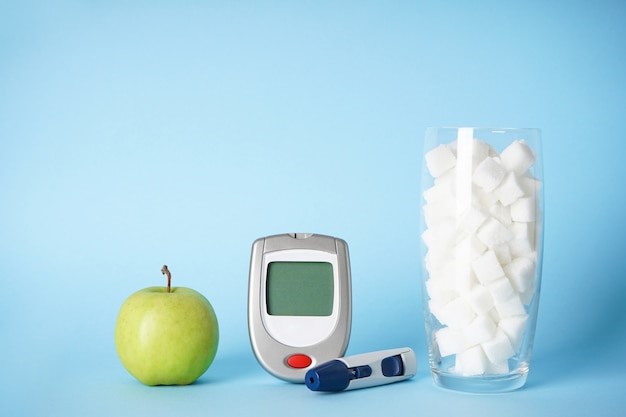
Complications in diabetes mellitus occur because of high blood glucose levels over a long period of time. They manifest themselves in the form of impaired blood circulation in small and large vessels.
The most frequent and severe complications of diabetes mellitus:
- Diabetic retinopathy - damage to the retina (partial or total loss of vision)
- Diabetic nephropathy - damage to the kidneys (increased blood pressure).
- Diabetic neuropathy - nerve damage (gradual decrease in sensitivity of legs, arms and pain).
- Damage to large vessels (atherosclerosis) can lead to angina pectoris, myocardial infarctions and strokes.
- Violation of immunity, due to the effect of high sugar on the cells of the immune system, reducing the body's resistance to infections (bacterial, viral, fungal).
- Poor wound healing, even small skin injuries can result in deep, easily infected ulcers, especially on the legs.
It is important to know about hypoglycemia, which is a drop in glucose levels below 3.9 mmol/L. (sometimes at 5-6 mmol/l.) develops quickly, suddenly and is characterized by increased sweating, weakness, body tremors, palpitations.
If hypoglycemia is not managed, hypoglycemic coma may develop when the patient cannot take the necessary actions to raise blood sugar on his/her own.
Provoking factors:
- Overdose of sugar-lowering medications
- Prolonged physical activity (increased glucose utilization)
- Early postpartum period
- Adrenal or pituitary insufficiency
- Carbohydrate deficiency, alcohol consumption, dietary restrictions for weight loss (without reducing the dose of sugar-reducing drugs).
What to do in case of hypoglycemia?
Stop all activities and take easily digestible carbohydrates (dissolve 4-5 pieces of sugar/20g in water or tea) or take ½ glass of sweet juice/drink.
Important: A diabetic patient receiving sugar-reducing medication should always carry easily digestible carbohydrates with him/her (lump sugar, drink...).
In severe hypoglycemia, when the patient cannot help himself, but consciousness is still preserved, it is necessary to give him water or sweet food. In case of loss of consciousness, an ambulance should be called.
Repeated hypoglycemia requires obligatory medical attention!
Ketoacidotic state/coma
This acute condition occurs when sugar is elevated (greater than 15-17 mmol/L.) due to absolute or severe relative insulin deficiency due to inadequate insulin therapy or increased insulin requirement.
Provoking factors:
- Inadequate dose or omission of insulin injection (or tablet administration)
- Withdrawal of sugar-lowering therapy spontaneously
- Violation of the insulin injection technique
- Accession of other diseases (infection, trauma, surgery, pregnancy, myocardial infarction, stroke, stress, etc.).
- Alcohol abuse
- Taking certain medications (glucocorticosteroids, etc.)
Symptoms:
- dry mouth, thirst
- increased urination
- possible weight loss (in prolonged ketoacidosis)
- severe abdominal pain, nausea, vomiting (as the condition progresses)
- Frequent deep breathing/Cussmaul's breath, acetone odor in exhaled air (sign of developing coma).
Treatment:
- insulin therapy
- restoration of lost fluids
- correction of mineral and electrolyte metabolism
- treatment of coma-inducing diseases and complications of ketoacidosis.
Important! Do not allow prolonged decompensation of diabetes and in time to contact the attending physician!
Remember! Regular control of sugar levels, cholesterol and BP can prevent or delay many complications!



